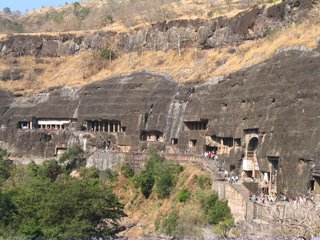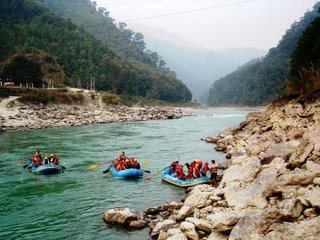 50 kilometers northwest from Beijing City lies the Ming Tombs - the general name given to the mausoleums of 13 emperors of the Ming Dynasty (1368 - 1644). The mausoleums have been perfectly preserved, as has the necropolis of each of the many emperors. Because of its long history, palatial and integrated architecture, the site has a high cultural and historic value. The layout and arrangement of all thirteen mausoleums are very similar but vary in size as well as in the complexity of their structures.Of the 16 emperors who ruled China during the Ming dynasty (1368-1644), 13 are buried in a box canyon at the southern foot of Tianshou Shan (hence the Chinese name Shisan Ling, the 13 Tombs). The first emperor of the Ming, Hongwu, is entombed in Xiao Ling, near Nanjing. The location of the second emperor's tomb is uncertain, while the unfilial seventh emperor, who usurped the throne after his brother was taken by the Mongols, was buried near the Summer Palace among the graves of concubines. Despite these omissions, this is the most extensive burial complex of any Chinese dynasty. A red gate sealed off the valley, guards were posted, and no one, not even the emperor, could ride a horse on these grounds. The site was chosen by the Yongle emperor, who also oversaw the construction of the Forbidden City. Protected from the bitter northern winds by a mountain range, the tombs are constructed in conventional fashion, with memorial halls at the front and burial chambers to the rear.
50 kilometers northwest from Beijing City lies the Ming Tombs - the general name given to the mausoleums of 13 emperors of the Ming Dynasty (1368 - 1644). The mausoleums have been perfectly preserved, as has the necropolis of each of the many emperors. Because of its long history, palatial and integrated architecture, the site has a high cultural and historic value. The layout and arrangement of all thirteen mausoleums are very similar but vary in size as well as in the complexity of their structures.Of the 16 emperors who ruled China during the Ming dynasty (1368-1644), 13 are buried in a box canyon at the southern foot of Tianshou Shan (hence the Chinese name Shisan Ling, the 13 Tombs). The first emperor of the Ming, Hongwu, is entombed in Xiao Ling, near Nanjing. The location of the second emperor's tomb is uncertain, while the unfilial seventh emperor, who usurped the throne after his brother was taken by the Mongols, was buried near the Summer Palace among the graves of concubines. Despite these omissions, this is the most extensive burial complex of any Chinese dynasty. A red gate sealed off the valley, guards were posted, and no one, not even the emperor, could ride a horse on these grounds. The site was chosen by the Yongle emperor, who also oversaw the construction of the Forbidden City. Protected from the bitter northern winds by a mountain range, the tombs are constructed in conventional fashion, with memorial halls at the front and burial chambers to the rear.It was originally built only as Changling, the tomb of Emperor Zhu Di and his empresses. This is the most magnificent of the tombs. The succeeding twelve emperors had their tombs built around Changling. Only the Changling and Dingling tombs are open to the public. Changling, the chief of the Ming Tombs, is the largest in scale and is completely preserved. The total internal area of the main building is 1956 square meters. There are 32 huge posts, and the largest measures about 14 meters in height.It inhumes Emperor Zhudi, the fourth son of Emperor Zhu Yuanzhang. This is unique as it is the only huge palace made of camphor wood. It covers about 1956 square meters. The ceiling is colorfully painted and supported by sixteen solid camphor posts. The floor was decorated with gold bricks. Unlike Changling, Dingling is under ground and about 27 meters deep. It is the mausoleum of Emperor Zhu Yijun, the thirteenth emperor who occupied the throne the longest during the Ming Dynasty, and his two empresses. The main features are the Stone Bridge, Soul Tower, Baocheng and the Underground Place, which was unearthed between 1956 and 1958. The entire palace is made of stone. The Soul Tower is symbolic of the whole of Dingling and it forms the entrance to the underground chambers. The yellow glazed tiles; eaves, archway, rafters and columns are all sculptured from stone, and colorfully painted. The entire construction is stable and beautiful! Served by three stone doors, it is divided into three Halls consisting of five high palaces - the front, the middle, the rear, the left and the right palaces. The Gate of the Tomb, the Gate of Eminent Favor and the Lingxing Gate all have the same structural form. The front hall, considered the square of the Palace, has no building within it. No special artifacts remain in either the left and right palaces that are about 7 meters high, six meters wide, and 26 meters long. However, each has a centrally placed white marble coffin bed, the surface of which is covered with gold bricks. On each bed there is a square hole filled with loess. This is the so-called "Gold Well". A paved path leads to the central hall where there are three white marble thrones. Incense, candles and flowers were set in front of the thrones. Before each of them, there are glazed 'Five Offerings' and a blue china jar that would have been filled with sesame oil to be used for lamps. The rear hall is the main and biggest part of the Palace. The coffins of Emperor Zhu Yijun and his two empresses are in this palace. There are also some precious items displayed with these coffins; among them is the gold imperial crown, one of the world's most rare treasures.
Getting There --
Ling also come here, visiting the spirit way and one of the tombs at blinding speed, but if you want time to explore some unrestored tombs (highly recommended), you'll have to make a separate trip. The most comfortable means of public transport is air-conditioned bus no. 845 from the Chegong Zhuang (202) metro stop (a 5-min. walk north of exit B) to Zhengfa Daxue in Changping (daily, about every 15 min.; 1 1/2-hr. trip; ¥9/$1.20/60p), then cross the street and take bus no. 314 to the Nan Xin Cun stop (daily The valley is just off the freeway that goes to Ba Da Ling. Many Chinese bus tours to Ba Da, about every 20 min.; 15-min. trip; ¥1/15¢/10p), which is adjacent to the entrance to the spirit way. From there, you can continue north to either Ding Ling Daokou to visit Ding Ling, a further 2km (1 1/4-mile) walk to the west, or on to the terminus at Chang Ling. It is also possible to take the green-and-white zhi (express) version of bus no. 919 to Zhengfa Daxue from Desheng Men (daily, about every 30 min.; 1-hr. trip; ¥9/$1.20/60p). A taxi hired in Beijing should cost less than ¥400 ($53/£27).

